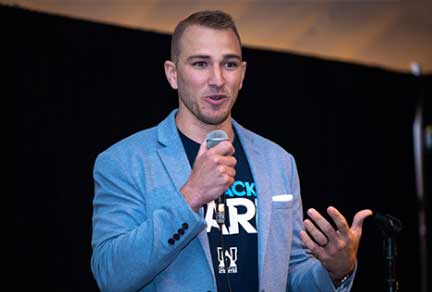Relyvrio Approval: Lessons Learned
By Olivia Novins, Michael Davitian, Carrie Jones
After two years of regulatory back and forth and debates around the drug’s efficacy, Amylyx Pharmaceuticals’ new Amyotrophic Lateral Sclerosis (ALS) treatment, Relyvrio (sodium phenylbutyrate/taurursodiol), was approved by the FDA on September 29, 2022. Relyvrio is just the third treatment approved for ALS, a fatal neurodegenerative disease, and so its approval represents an important milestone for that disease. However, Relyvrio appears to only have an incremental impact on ALS progression, a fact that complicated its approval process and underpinned criticism of the drug’s pricing. Relyvrio’s experience – including the approval process, the important role of patient advocacy organizations in accelerating approval, and reactions to its price – contain important lessons for drug makers developing treatments for neurodegenerative diseases.
Relyvrio’s Approval Process
Relyvrio’s tumultuous approval process is illustrated below. The process was challenging because approval was based on a small (N=137) Phase II trial and a post hoc analysis of that data. The initial results, which read out in September 2020, showed that Relyvrio slowed functional decline by 25% compared to placebo as measured by the ALS Functional Rating Scale-Revised (ALSFRS-R). Findings from the additional open-label extension study suggested Relyvrio may extend survival by 6 months. While this data is encouraging, FDA and its advisory committee had misgivings: the initial FDA advisory committee meeting voted against recommending approval and reviewers suggested the data package was insufficient. Prior to the second advisory committee meeting, FDA released briefing documents stating the data was not “sufficiently independent or persuasive” to serve as evidence of efficacy. The fact that FDA held a second advisory committee meeting to review additional data and analysis from Amylyx is itself extraordinary as this rarely occurs, and indicates the agency struggled to balance the enormous need for new ALS therapies with the modest data package supporting this drug.
In granting full approval for Relyvrio, the agency cited the significant unmet needs in treatment and that the additional analyses Amylyx provided indicated that the drug was likely efficacious. Notably, these additional analyses included a comparison of observed survival in Amylyx’s Phase II study to two external controls: (1) predicted survival using a survival prediction model derived from an ALS natural history database, and (2) matched treatment naïve participants from historical clinical trials of ALS. Thus, Relyvrio’s approval is an example of the successful application of real-world evidence to support a regulatory decision and the agency’s acceptance of such data as part of an evidence package. In addition, FDA was encouraged by the fact that Amylyx indicated it would voluntarily withdraw the product from the market if the Phase III trial was unsuccessful, which is an important commitment, given that FDA has provided full approval. That said, it is unclear how FDA and Amylyx are defining success for that trial and the exact nature of Amylyx’s commitment. Finally, FDA was likely influenced by patient advocacy groups, who mounted a significant campaign in support of Relyvrio approval, particularly after FDA’s first advisory committee meeting, which resulted in a negative vote (we discuss patient advocacy groups in more detail below).
Relyvrio’s approval process is reminiscent of Biogen and Eisai’s Aduhelm (aducanumab), which was also approved with a weaker data package. Together, these approvals show FDA is willing to be flexible and approve products based on more modest data packages that rely on limited phase II data, post-hoc analyses, and/or surrogate endpoints for neurodegenerative diseases with large unmet need. Aduhelm’s approval is arguably a larger demonstration of flexibility from the agency since it’s considerably harder to recruit and run clinical trials in a rare disease like ALS, and the agency has historically provided more flexibility to drug developers for rare patient populations. FDA’s enhanced flexibility is obviously enormously helpful for drug makers with treatments in development for these indications. However, the agency’s actions have invited scrutiny: in the wake of Relyvrio’s approval, major media outlets – including the New York Times and CNN – highlighted the drug’s weaker data package and questioned its efficacy and the basis for FDA’s approval. This scrutiny will likely intensify if follow-up studies conclude these therapies (Aduhelm, Relyvrio) have minimal benefit.
FDA appears to be struggling with conflicting impulses: on the one hand, they want to provide regulatory flexibility for indications where there is high unmet need and where measures of disease activity and progression are poor. This enables patients to access therapies sooner and supports innovation. On the other hand, FDA wants payers, providers, and patients to have confidence in the safety and efficacy of approved products and – while not an explicit consideration for FDA – the agency doesn’t want the healthcare system saddled with high-cost medications that have limited clinical impact.
For now, drug makers should be encouraged by FDA’s recent track record of flexibility but also be aware that the agency may become more stringent with its approval processes if scrutiny of its leniency continues to mount.
The Role of Patient Advocacy Organizations
Although Relyvrio’s approval has been met with some criticism, ALS patient advocacy groups are pleased that patients have a new treatment option. After the negative feedback from FDA’s first advisory committee, patients and advocacy groups campaigned for its approval, citing its strong safety profile (i.e., even if efficacy is modest, the drug poses few safety risks) and the fact that patients were in desperate need of additional treatment options. Advocacy groups submitted letters to FDA from ALS-treating physicians and public comments from patients and their advocates during FDA meetings. This seems to have affected the course of Relyvrio’s approval process and helped enable an earlier approval. In December 2021, prior to Relyvrio’s approval, organizations like the ALS Association and I Am ALS worked with members of Congress to secure passage of the Accelerating Access to Critical Therapies (ACT) for ALS act, which provides grant funding for ALS research and broadens access to therapies in development.
Relyvrio Pricing and Market Access
At a recently announced price of $158,000 per patient per year, Relyvrio comes in at about $10,000 less than Radicava (edaravone), another ALS drug that was approved in 2017. Like Relyvrio, Radicava also has an incremental impact on disease progression: Radicava slowed the loss of physical function by 33% compared to placebo as measured by the ALSFRS-R. It is unclear whether Radicava prolongs survival as study results have varied and a survival benefit has only been demonstrated in small patient populations. So Relyvrio’s pricing is aligned with an ALS therapy with comparable clinical impact.
Despite that, the price of Relyvrio has been controversial, with many stakeholders unimpressed that the drug is priced at a modest discount to an existing ALS therapy. Amylyx has been criticized by major media outlets for its pricing, including The Washington Post and The Wall Street Journal. Concerns around pricing raise questions of how payers will react and how flexible they will be in providing access to the therapy. Some prominent physicians have expressed concern around the high cost and potential access restrictions. Dr. Rick Bedlack, the director of the Duke ALS Clinic, said in an interview that “the only thing more frustrating than not having options to offer patients is having an option that is not accessible because their insurance company refuses to pay for it” and expressed hope that Amylyx would offer robust patient assistance programs. Indeed, Amylyx has announced that it will create a patient assistance program that will limit copays for those with commercial insurance – a move that was applauded by the ALS Association. Going further, the Institute for Clinical and Economic Review (ICER) published a report in which it calculated that a Relyvrio price of $9,100 to $30,700 would make it cost effective – very different from its $158,000 price tag. ICER and other experts have suggested using a short-term pricing strategy, in which a price aligned with the production cost is used until the therapeutic value can be fully established, but there are no indications Amylyx will follow this approach.
The pricing backlash and market access concerns bear some similarities to Aduhelm (aducanumab). Biogen and Eisai launched Aduhelm at $56,000 for Alzheimer’s disease after the drug was approved based on a data that showed a modest benefit and only in a post hoc analysis. Criticism of Aduhelm’s price was swift and severe and Biogen and Eisai later reduced the price to $28,000. Additionally, the Centers for Medicare & Medicaid Services (CMS) drastically limited coverage of Aduhelm to patients in clinical trials. As a result, Aduhelm is only accessible to a small population of patients.
Ultimately, Amylyx is unlikely to face the same pricing and market access pressure that Biogen and Eisai did. The economic impact of a $56,000 (per year, per patient) therapy for Alzheimer’s, a disease affecting 6 million US patients, is significantly greater than a $158,000 therapy for ALS, a disease affecting approximately 20,000. Thus, the pressure on Amylyx to adjust its pricing may be less intense. That said, the experiences of Aduhelm and Relyvrio illustrate that drug makers developing therapies for neurodegenerative diseases should anticipate significant scrutiny of their pricing and be prepared with a robust defense of the value of their therapy.
Key Lessons for Drug Makers
The approval and reception of Relyvrio highlights several key learnings for neurodegenerative drug developers to consider as they move through development and commercialization.
For now, FDA has shown flexibility in considering approval for drugs for diseases with limited treatment options and significant unmet needs, particularly neurodegenerative diseases. However, this flexibility may wane if scrutiny of therapies approved with modest data packages continues to mount.
- Developers should design Phase II trials with an eye towards potential approval based on the data from those trials. Ideally, this means running Phase II trials with a randomized controlled design with robust efficacy endpoints.
- Supplementary data for open label extension studies and/or post hoc analyses can bolster otherwise mixed data packages, so drug makers should be prepared to undertake these activities rapidly upon conclusion of their pivotal trials, whether Phase II or III.
- FDA’s current flexibility may not persist and so drug makers should be prepared to run larger-scale Phase III trials without the benefit of revenue from an approved product. For its part, Amylyx initiated its Phase III PHOENIX trial before Relyvrio was approved. Drug makers must plan carefully: on the one hand, they may be awarded an early approval and have to rapidly deploy commercial resources to support launch. Drug makers don’t want to be caught flat-footed and unable to support patients and providers who are desperate for new treatments. On the other hand, drug makers may be required to run a traditional, expensive phase III program without the benefit of revenue and thus extend their cash runway.
Patient advocacy groups are playing an increasingly important role in facilitating development and approval and drug makers should nurture relationships with them.
- As we’ve seen with Relyvrio, Aduhelm, and Exondys 51, patient advocacy groups played a pivotal role influencing FDA. FDA is willing to hear patients and incorporate their perspectives into decision-making. Patient voices may be particularly potent in neurodegenerative diseases, where efficacy is often measured using flawed and subjective endpoints like the ALSFRS-R. With endpoints like these, it can be difficult to interpret the significance of a marginal improvement and patients can add critical perspective.
- Non-profit and patient advocacy organizations can also support development by facilitating clinical trial enrollment and providing funding. As we’ve discussed, ACT for ALS was championed by patient advocacy organizations. In another example, the Cystic Fibrosis foundation was an important source of funding for Vertex’s transformational therapies for that disease. While we have not focused a great deal on the role of non-profit and patient advocacy organizations in development, it’s important to note their role here also.
Pricing is coming under increasing scrutiny and companies need to be prepared to provide a robust defense of their pricing.
- Both Amylyx and Biogen/Eisai were criticized by various stakeholders for their pricing. Biogen/Eisai ultimately halved their pricing and CMS severely limited market access to Aduhelm. Many stakeholders noted that Biogen/Eisai’s pricing would place a significant burden on the public healthcare system (CMS) without providing clear benefit. Amylyx’s experience is particularly instructive, since the company aligned its pricing well with the precedent set by Radicava, which provides a similar clinical benefit. Regardless, its pricing was still criticized. So, alignment with comparable products may not be sufficient as stakeholders (payers, patients, providers) increasingly want to see prices correspond to clinical benefit. Drug makers need to have a robust justification for pricing and be able to illustrate how their products impact patients’ disease progression and quality of life. Ideally, clinical trials are designed to create a more holistic picture, for example by capturing quality of life through patient reported outcomes. Open label extension studies are an opportunity to further bolster data packages. Finally, as we mentioned above, drug makers may consider partnering with patient advocacy organizations to clarify how seemingly marginal impacts on ambiguous disease scales may have meaningful impacts for patients.
###
Olivia Novins is a Senior Analyst based in the Boston office with experience in product and portfolio opportunity assessment and commercial strategy across the biopharma and diagnostics sectors.
Michael Davitian is a Vice President in our biopharma practice, where he focuses on building the firm’s expertise within neurology and ophthalmology.
Carrie Jones is a Partner in the Biopharma practice focusing on supporting companies developing and commercializing therapies for Rare Disease patients.
Related Insights
Blog
Regulatory considerations in designing clinical trials for Alzheimer’s disease
Jan 24, 2024
Blog
EU Biotech Act: Strategic considerations for biotech companies
Dec 22, 2025
Blog
New guideline for the management of Systemic Lupus Erythematosus (SLE): Considerations for clinical development
Jan 12, 2024
Blog
CMC flexibilities in biological medicinal product development: The current EU perspective
Jan 12, 2024
Blog
The EU-CTR transition: Four key ways to prepare now
Jan 12, 2024
Webinar
EU-CTR: Preparing for trial transition
Nov 30, 2023
Blog
Adoption of the ICH Q12 guideline: New Horizons for Efficient Product Supply Chain Management for a Key Global Market
Nov 13, 2023
Webinar
Breakthrough Devices Program: Where’s the value?
Nov 13, 2023
Blog
Newly released FDA data and approvals signal a more welcoming regulatory environment for neuroscience clinical trials
Oct 3, 2023
Whitepaper
Advancing clinical development through innovative trial design
Nov 3, 2023
Blog
Assessing the need for comparative clinical trials in biosimilar development programs
Sep 21, 2023
Whitepaper
Scientific Validity Reports: a mandatory requirement for In Vitro Diagnostic Regulation (IVDR)
Sep 19, 2023
Related Insights
Blog
Regulatory considerations in designing clinical trials for Alzheimer’s disease
Jan 24, 2024
Blog
EU Biotech Act: Strategic considerations for biotech companies
Dec 22, 2025
Blog
New guideline for the management of Systemic Lupus Erythematosus (SLE): Considerations for clinical development
Jan 12, 2024
Blog
CMC flexibilities in biological medicinal product development: The current EU perspective
Jan 12, 2024
Blog
The EU-CTR transition: Four key ways to prepare now
Jan 12, 2024
Webinar
EU-CTR: Preparing for trial transition
Nov 30, 2023
Blog
Adoption of the ICH Q12 guideline: New Horizons for Efficient Product Supply Chain Management for a Key Global Market
Nov 13, 2023
Webinar
Breakthrough Devices Program: Where’s the value?
Nov 13, 2023
Blog
Newly released FDA data and approvals signal a more welcoming regulatory environment for neuroscience clinical trials
Oct 3, 2023
Whitepaper
Advancing clinical development through innovative trial design
Nov 3, 2023
Blog
Assessing the need for comparative clinical trials in biosimilar development programs
Sep 21, 2023
Whitepaper
Scientific Validity Reports: a mandatory requirement for In Vitro Diagnostic Regulation (IVDR)
Sep 19, 2023



